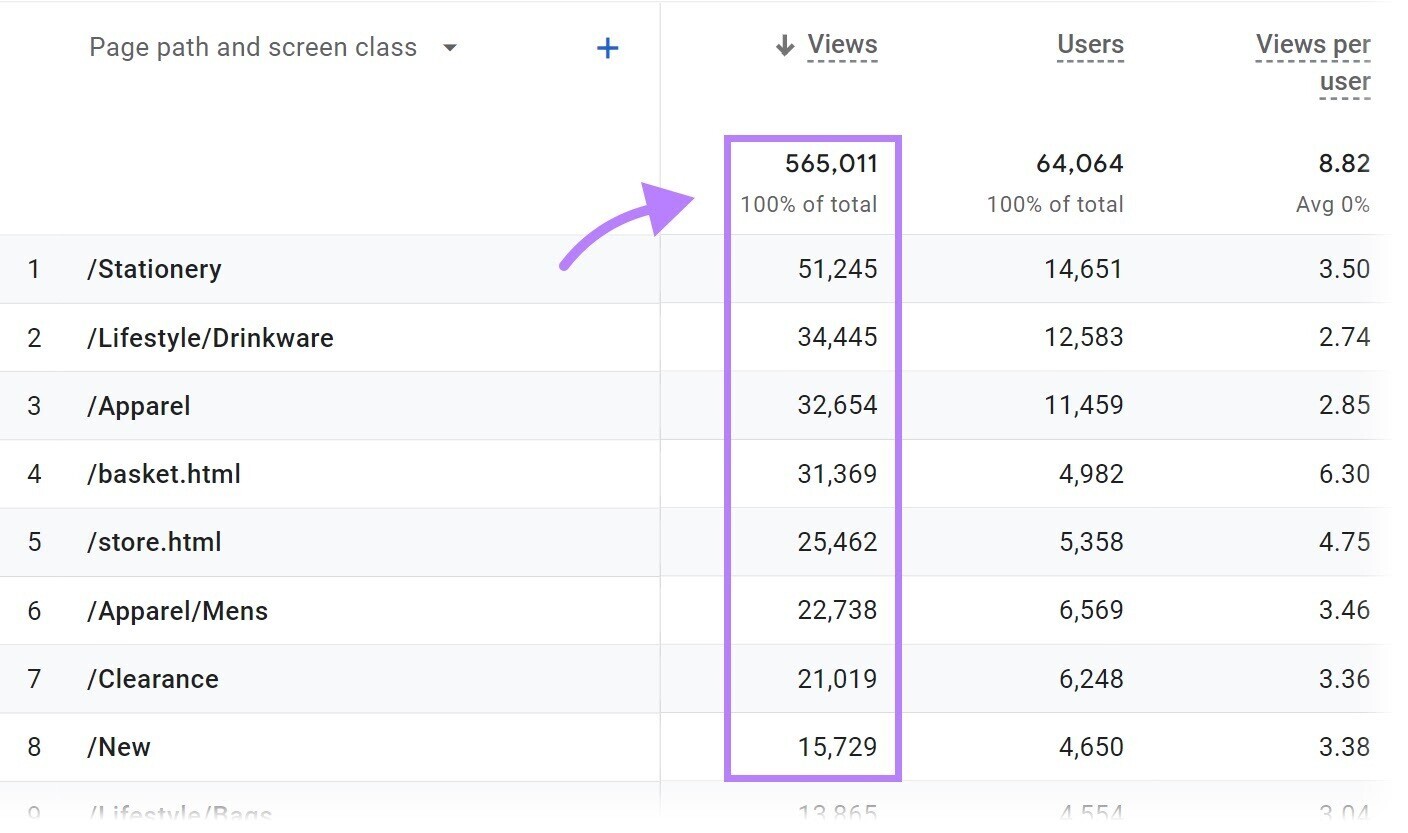Every little thing You Required to Know About When Does the Google Analytics Tracking Code Send an Event Hit to Analytics
Every little thing You Required to Know About When Does the Google Analytics Tracking Code Send an Event Hit to Analytics
Blog Article
Enhance Your SEO Method With Effective Google Analytics Monitoring Code
Incorporating Google Analytics tracking code into your SEO approach is a crucial step towards achieving quantifiable results. What specific techniques can you embrace to take full advantage of the influence of this information on your Search engine optimization efforts?

Recognizing Google Analytics Essentials
To effectively leverage Google Analytics for SEO, it is necessary to grasp its foundational ideas. Google Analytics acts as an effective device for tracking and analyzing internet site web traffic, offering understandings that are crucial for enhancing online search engine efficiency. At its core, the platform makes it possible for users to keep an eye on user behavior, web traffic resources, and essential efficiency indicators (KPIs) such as bounce rates and session periods.
Familiarity with the user interface is essential. Key areas consist of the Audience, Acquisition, and Actions tabs, each using valuable information. The Audience area offers market insights, helping to customize web content to target individuals efficiently. The Procurement tab reveals how site visitors come to the website, whether through organic search, paid advertisements, or social media, directing strategic adjustments in advertising initiatives.
Recognizing metrics such as organic traffic quantities and conversion rates is essential for assessing search engine optimization efficiency. Inevitably, mastering these fundamentals allows digital marketers to harness the full possibility of Google Analytics, driving informed decisions that boost general SEO methods. By developing a strong structure, organizations can effectively analyze their efficiency and identify possibilities for enhancement in their online existence.
Establishing Monitoring Code
Correctly setting up the monitoring code is crucial for precise data collection in Google Analytics. The initial step entails developing a Google Analytics account and building, where you will certainly get a distinct monitoring ID. This ID is vital for linking your web site's information to your Google Analytics account.
Once you have your tracking ID, integrate the monitoring code bit into your web site's HTML. This is typically put in the header area of each page to ensure it loads early in the web page rendering procedure. If you're making use of a Web content Monitoring System (CMS) like WordPress, several plugins simplify this process, allowing you to add the tracking code without straight HTML editing and enhancing.
After executing the tracking code, it is important to examine its performance. If the monitoring code is appropriately mounted and functioning, you can use the Google Tag Assistant tool to verify. Furthermore, keep track of the real-time coverage attribute in Google Analytics to validate that information is being gathered appropriately.
Making sure that the monitoring code is effectively set up lays the foundation for efficient information evaluation, enabling you to make educated choices to enhance your search engine optimization strategy and general website efficiency.
Trick Metrics to Monitor
Determining key metrics to keep track of is important for understanding the performance of your SEO approach with Google Analytics. By concentrating on specific information factors, you can evaluate the impact of your optimization efforts and make notified choices to enhance efficiency.
This metric reflects the total wellness of your SEO approach. A high bounce price might signify that your content is not satisfying customer assumptions or that your landing web pages need improvement.
Additionally, think about tracking conversion prices, as these metrics disclose just how well your site meets its service purposes, such as generating sales or leads. Search phrase positions are also essential; tracking changes in keyword settings assists assess the effectiveness of your targeted search engine optimization efforts. Lastly, evaluate the ordinary session period, which shows user engagement and material significance. By very closely adhering to these essential metrics, you can gain useful understandings into your search engine optimization method's efficiency and recognize locations for enhancement.
Analyzing User Habits
Comprehending user habits is vital for refining your SEO method and taking full advantage of site performance. when does the google analytics tracking code send an event hit to analytics?. By evaluating exactly how visitors connect with your internet site, you can uncover important insights that notify your content and design choices. Google Analytics offers a wealth of data on individual involvement metrics, such as bounce prices, time on website, and web page sights per session. These metrics help identify which pages reverberate with your target market and which may call for optimization.
In addition, tracking customer circulation can reveal common navigating courses, highlighting potential bottlenecks or locations for improvement. Comprehending the demographics, passions, and geographic places of your site visitors enables even more tailored content that talks to their demands. Making use of segmentation features in Google Analytics better boosts your ability to examine customer behavior by permitting you to compare different target market teams.
Additionally, keeping an eye on conversion rates and user actions can give insights into the efficiency of your phone calls to action and overall website style. This alternative view of customer habits is crucial for making educated choices that boost individual experience and drive higher involvement, inevitably adding to enhanced search engine optimization performance.
Leveraging Insights for SEO
Consistently leveraging understandings gotten from customer habits analysis can considerably boost your search click engine optimization initiatives. By making use of Google Analytics, you can identify key metrics such as bounce rates, session duration, index and user circulation, which reveal exactly how visitors communicate with your material. These understandings allow you to determine locations requiring improvement, such as high exit web pages or underperforming search phrases.

In addition, tracking natural web traffic sources provides quality on which networks are most reliable, enabling you to assign sources tactically (when does the google analytics tracking code send an event hit to analytics?). By assessing conversion rates together with website traffic information, you can identify which web pages drive actual company outcomes, improving your SEO method additionally
Integrating these insights right into your material approach not only boosts visibility however also fosters an extra user-centric technique. Ultimately, a data-driven search engine optimization approach notified by analytics not just increases positions however likewise aligns your objectives with user assumptions, bring about sustained growth and involvement.
Conclusion
Reliable application of important source Google Analytics tracking code substantially boosts a search engine optimization approach by offering vital understandings right into user behavior and website traffic sources. Keeping track of essential metrics such as organic traffic, bounce rates, and conversion prices helps with the identification of enhancement locations. In addition, examining user demographics and interaction metrics enables for an extra targeted content strategy. Ultimately, leveraging these insights adds to refining SEO initiatives, driving even more appropriate web traffic, and enhancing total web site performance.
Integrating Google Analytics tracking code right into your Search engine optimization strategy is a crucial action towards attaining measurable results. At its core, the platform makes it possible for individuals to keep an eye on individual habits, web traffic sources, and crucial performance indicators (KPIs) such as bounce rates and session durations.
Recognizing user actions is crucial for refining your Search engine optimization method and optimizing website efficiency.Consistently leveraging understandings gotten from customer actions analysis can significantly enhance your SEO efforts.Effective application of Google Analytics tracking code dramatically enhances a Search engine optimization strategy by supplying critical insights right into customer habits and traffic resources.
Report this page